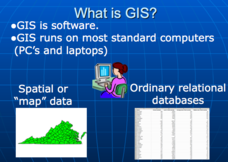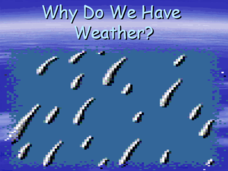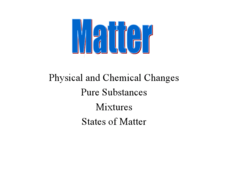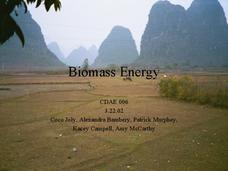Curated OER
Energy and Metabolism - Photosynthesis
Although the title slide says that this is a reading check, valuable and applicable information is included in this presentation that you can use in your biology class. Foster an understanding of photosynthesis with the notes, graphs,...
Curated OER
Kingdom Animalia: Sponges, Cnidarians, Flatworms, and Roundworms
As you work through the biological hierarchy, visit several phyla within the animal kingdom. This PowerPoint introduces viewers to characteristics and reproduction in sponges, cnidarian, flatworms, and roundworms. Make sure to add the...
Curated OER
Vertebrates: Part II, Reptiles & Birds
Zoologists tour of the worlds of reptiles and birds when viewing this presentation. The physical characteristics, methods of reproduction, homeostasis, and special senses of each are detailed. Diagrams include the reptile egg, bird...
Curated OER
Taxonomy - The Science of Naming Organisms
Carolus Linnaeus designed the binomial nomenclature system of naming organisms that is still in use more than 200 years later. By viewing this PowerPoint, upcoming biologists learn how to use it. They are also introduced to the hierarchy...
Curated OER
Seedless Plants
Journey through the world of seedless plants with this visually appealing PowerPoint. Physical characteristics of mosses, liverworts, ferns, horsetails, and club mosses are detailed in bullet-point fashion. If possible, have living...
Curated OER
Mendel's Laws of Heredity
Easy-to-read notes about Mendel's Laws of Heredity make up this collection of slides. In bullet-point style, viewers are exposed to Mendel's pea plant experimentation and the rules he developed that govern genetics. There are no graphics...
Curated OER
Bacteria
The first slide lists the six kingdoms in the biological hierarchy, but the remaining 10 slides cover characteristics of archaebacteria and eubacteria. Topics include how energy is obtained, arrangement, and shape. This brief, but...
Curated OER
Taxonomy
Biology novices name the seven levels of classification and use binomial nomenclature for naming living organisms. The first half of this presentation bestows a brief history of taxonomy, while the second half instructs on how to use our...
Curated OER
Phytoplankton
Tomorrow's marine biologists journey through the world of phytoplankton when viewing this slide show. They are exposed to the shapes and life cycle of diatoms, and introduced to dinoflagellates, coccolithophorids, and silicoflagellates....
Curated OER
Early Scientists' Contributions
Five scientists and their contributions to modern cell theory are listed, one person per slide. It concludes by having viewers answer recap questions. This simple presentation can be used on the first day of your unit on cells...
Curated OER
Upwelling in the World Ocean
Here is a fascinating topic: the upwelling of ocean waters. Oceanography pupils learn what mechanisms cause upwelling, types of upwelling, and the effects on marine life. Colorful satellite imagery and informative diagrams bring this...
Curated OER
Message in a Bottle - A Satellite Journey through the Gulf Stream
The Gulf Stream has historically provided humans with a faster trade route because of its swift-moving waters. It continues to be a source of information and fascination for oceanographers today. As your class views this collection of...
Curated OER
Earth Science
A slide for each of the planets (including recently downgraded Pluto), the sun, our moon, four of Jupiter's moons, and the rings of Saturn make up this visually appealing PowerPoint. A few facts for each body in the solar system...
Curated OER
Applications of GIS
Don't be concerned that the title slide of this presentation mentions Virginia's Geospatial Extension Program; this slide show is very informative for any technology-focused curriculum when considering global information systems. It...
Curated OER
Hurricanes
Your middle school meteorologists mull over hurricane facts while viewing this presentation. They learn about the physical characteristics and power of these low-pressure storms. They also discover the danger of hurricanes: freshwater...
Curated OER
Template for Science Jeopardy
A pre-programmed Jeopardy-style presentation awaits your personalization. You get to choose the topics for the five different categories and create your own questions for each. Just plug them into the correct spots on each slide and you...
Curated OER
Why Do We Have Weather?
Convection is offered as the reason behind our weather phenomena. This presentation assumes that viewers are familiar with the methods of heat transfer, and is therefore more geared toward middle-school meteorologists. The focus is on...
Curated OER
Weather - Clouds and Precipitation
It's raining! It's pouring! Your class will not be snoring when viewing this presentation. Cloud formation and types are explained in the first half. Forms of precipitation are detailed in the second half. Concepts are explained...
Curated OER
Rivers & Watersheds
An outstanding presentation of rivers and watersheds awaits your earth scientists! The erosion process created by rivers is addressed. Viewers are introduced to v-shaped valleys, alluvial fans, and watersheds. Several slides are...
Curated OER
Matter
In a neat and straightforward manner, this PowerPoint delivers basic introductory information on the properties of matter, physical and chemical changes, and pure substances vs. mixtures. It also defines the states of matter. For some...
Curated OER
Ocean Circulation
In this physical oceanography PowerPoint, viewers learn about ocean circulation, sea surface temperatures, and salinity. Relationships among these aspects are explained, as well as their impact on the atmosphere and climate. Each slide...
Curated OER
Restoring and Protecting Chesapeake Bay and River Water Quality
A professional and comprehensive presentation on Chesapeake Bay water quality is in store for your ecology class. If you live in the Chesapeake Bay region and want to get learners involved in conservation efforts, this slide show will do...
Curated OER
Effects of Ozone Depletion
Explore the causes of ozone depletion and the effect on plankton, algae, plants, amphibians, and humans. Learn how the Montreal Protocol has possibly helped reverse the decline of the ozone layer. Warning: photos of skin and eye...
Curated OER
Biomass Energy
Consider biomass as an alternative energy source with this PowerPoint. Environmental science pupils discover the potential of converting gases produced by landfills into useful energy. They compare and contrast environmental and economic...
Other popular searches
- Animal Communities Va
- Va Elevation Maps
- Va Declaration of Rights
- Colonial Agriculture Va
- Dictionary Definitions Va
- Va. Sol
- Va Sol
- Va¥rt
- Williamsburg Va
- First Inhabitants of Va
- Va Watersheds
- Jamestown Va























